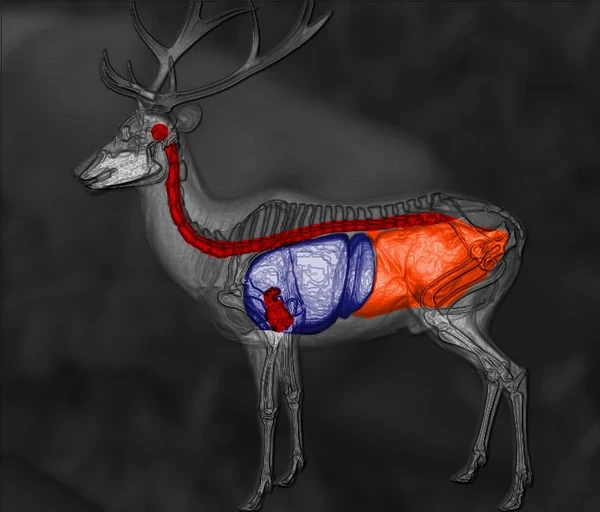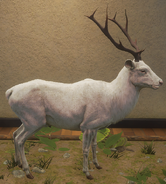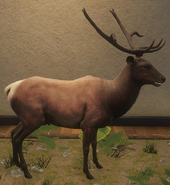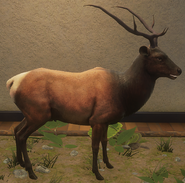- "Also known as the Olympic elk, the Roosevelt elk is one of the largest deer species in North America and the largest subspecies of American Elk. They are characterized by their dark and bulky necks and the bulls often have large, branching antlers. Roosevelt elk live inside forests on flat and steep terrain, but often venture out along the edges of the water where they feed on grass and woody plants. They are commonly found in large herds. Male elk often make loud and highly distinct sounds, known as bugling, that can be heard over very long distances. Adult males are typically 40% larger than their female counterparts and weigh on average 320.00 - 331.00 kg (705 - 730 lb)."
- ― In-Game Description
The Roosevelt Elk is a large-sized kind of deer (class 7). It can be hunted on Layton Lake District. It is one of 2 named Elk species in game, the other being the Rocky Mountain Elk.
Features[]
| Description | |
|---|---|
| Behavior | Docile and vocal |
| Habitat | Forests and mountainous terrain |
| Senses | Highly tuned senses in general, particularly excellent hearing and smell |
| Social | Males are solitary, females live in medium to large-sized groups |
| Active | During dawn and dusk |
| Recommended Equipment | Class 7 Ammo, Elk Caller, Elk Scent |
| Species | Cervus canadensis roosevelti |
| Difficulty | Hard |
Need Zone Times[]
| Times | Activity |
|---|---|
| 00:00 - 04:30 | |
| 04:00 - 08:30 | |
| 08:00 - 12:30 | |
| 12:00 - 16:30 | |
| 16:00 - 20:30 | |
| 20:00 - 00:30 |
Shot scheme[]
| Color code | |
|---|---|
| Red - Kills immediately | |
| Blue - Kills very quick | |
| Orange - Kills slowly | |
| No Color - Unlikely to kill |
Fur Variants[]
Male[]
Female[]
Trivia[]
- Part of the original cast of animals huntable at launch
- The Roosevelt Elk was named after famed presidential outdoorsman Theodore Roosevelt.
- Ironically, 'Elk' may have been named after the Moose as European Settlers possibly mistook the animal as the "Eurasian Elk" back home. To further complicate things. When encountering the "real" Elk they adopted a completely different name for it since 'Elk' was already taken.[1]
- 'Wapiti' is a popular name for the Elk and is of Shawnee origin. Its name means "White Rump"
- The Roosevelt Elk was the 3rd animal to receive TruRACS.
- Elk possess "Canine" teeth called "Ivories" that are actually a vestigial trait left over from the Elk's ancestors, who were thought to have tusks.[2]













